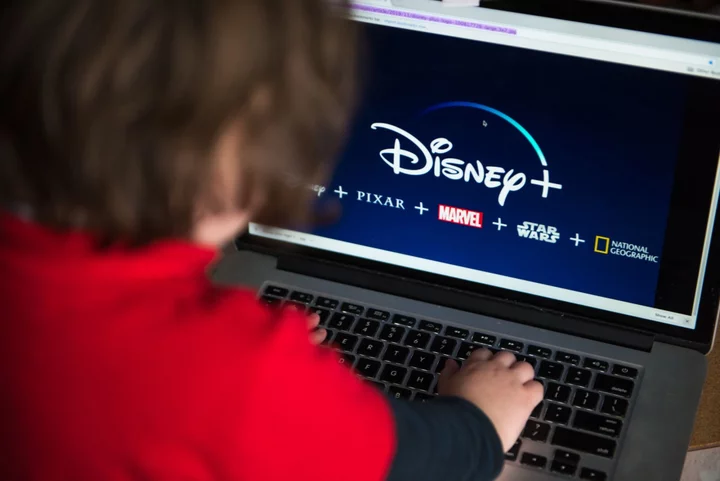Walt Disney Co. reported second-quarter sales and profit in line with Wall Street’s expectations and a smaller-than-anticipated loss in its streaming TV business.
Disney’s direct-to-consumer segment, which includes the flagship Disney+ streaming service, posted a loss of $659 million, the company said Wednesday. That’s significantly lower than the $850.3 million analysts projected and less than half what it was just two quarters ago.
Disney introduced a new ad-supported tier for Disney+ in December, hiking the cost of the ad-free version by 38% to $11 a month in the process. While boosting revenue, the move appears to be costing the company customers: Paid subscriptions to Disney+ fell for the second straight quarter to 157.8 million. Analysts had expected 163.1 million.
Total revenue for the company rose 13% to $21.8 billion in the period ended April 1, driven by strong performance of the company’s theme parks. Adjusted earnings of 93 cents per share decreased from the same period last year.
The company’s resorts and consumer products unit boosted income by 23% to $2.17 billion, in part due to a return to profitability for the company’s international theme parks.
Profit at Disney’s traditional TV business, including the ESPN cable networks and ABC’s broadcasting business, fell 35% to $1.83 billion, the result of higher sports programming costs and lower advertising.
Chief Executive Officer Bob Iger has been working to achieve profitability in streaming by 2024. As part of a wider plan to put Disney on a better financial footing, he’s cutting $5.5 billion in annual costs and culling 7,000 jobs from the entertainment giant’s workforce.
“We’re pleased with our accomplishments this quarter, including the improved financial performance of our streaming business, which reflect the strategic changes we’ve been making throughout the company,” Iger said in a statement.
Disney shares fell 1% to $101.13 at the close Wednesday in New York.
The narrower losses at Disney+ should please investors who have shifted their focus in the past year from subscriber growth to the staggering cost of building and operating online video platforms. Streaming losses ballooned under former CEO Bob Chapek, who was ousted in November after the company reported a quarterly loss of nearly $1.5 billion streaming.
Media giants are racing to break even on their investments in streaming to counter declines in the traditional TV business. Warner Bros Discovery Inc. and Paramount Global reported significant drops in revenue from TV advertising last week.
Under Iger, who returned to lead Disney in November, the Burbank, California-based company has overhauled its structure by creating three reporting units: Entertainment, Parks and ESPN, which includes the sports network and the ESPN+ streaming service.
The recent cost cutting led to the departure of streaming chief Michael Paull and most of the product and technology teams that supervised the successful rollout of Disney+ in 2019.
Disney has appointed Goldman Sachs Group Inc. to help evaluate whether the company should sell its two-thirds stake in the Hulu online video platform or exercise an option to acquire Comcast Corp.’s one-third interest next year. Iger has said Disney will scrutinize Hulu’s sales and earnings potential before making any decision. Hulu subscriptions were flat in the quarter.









